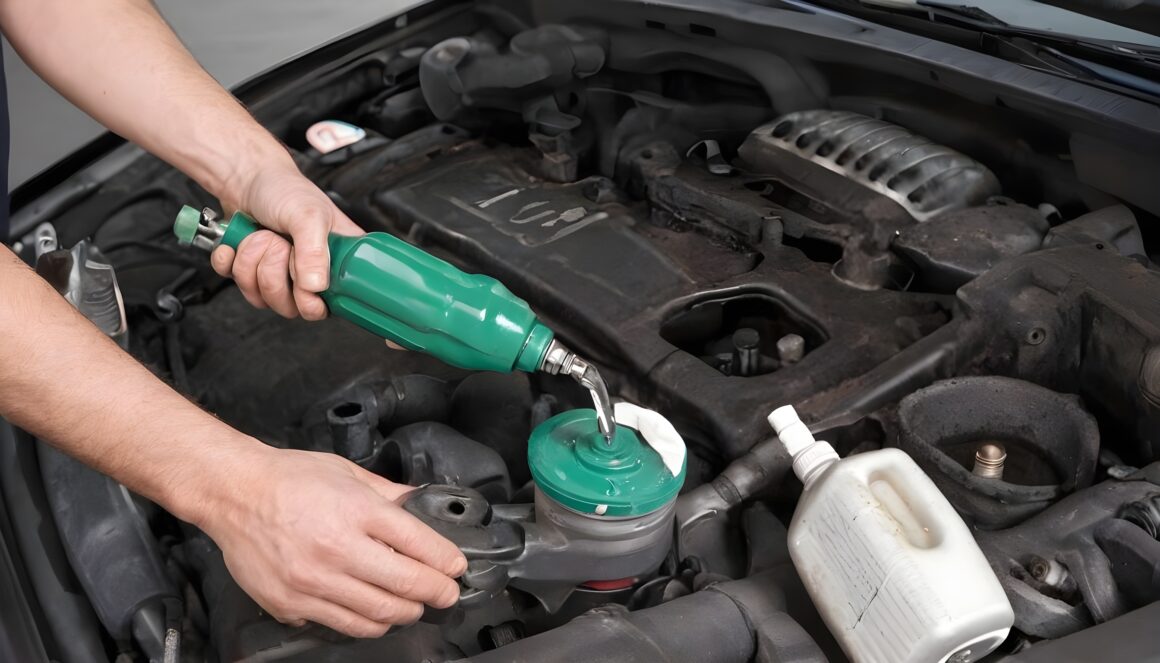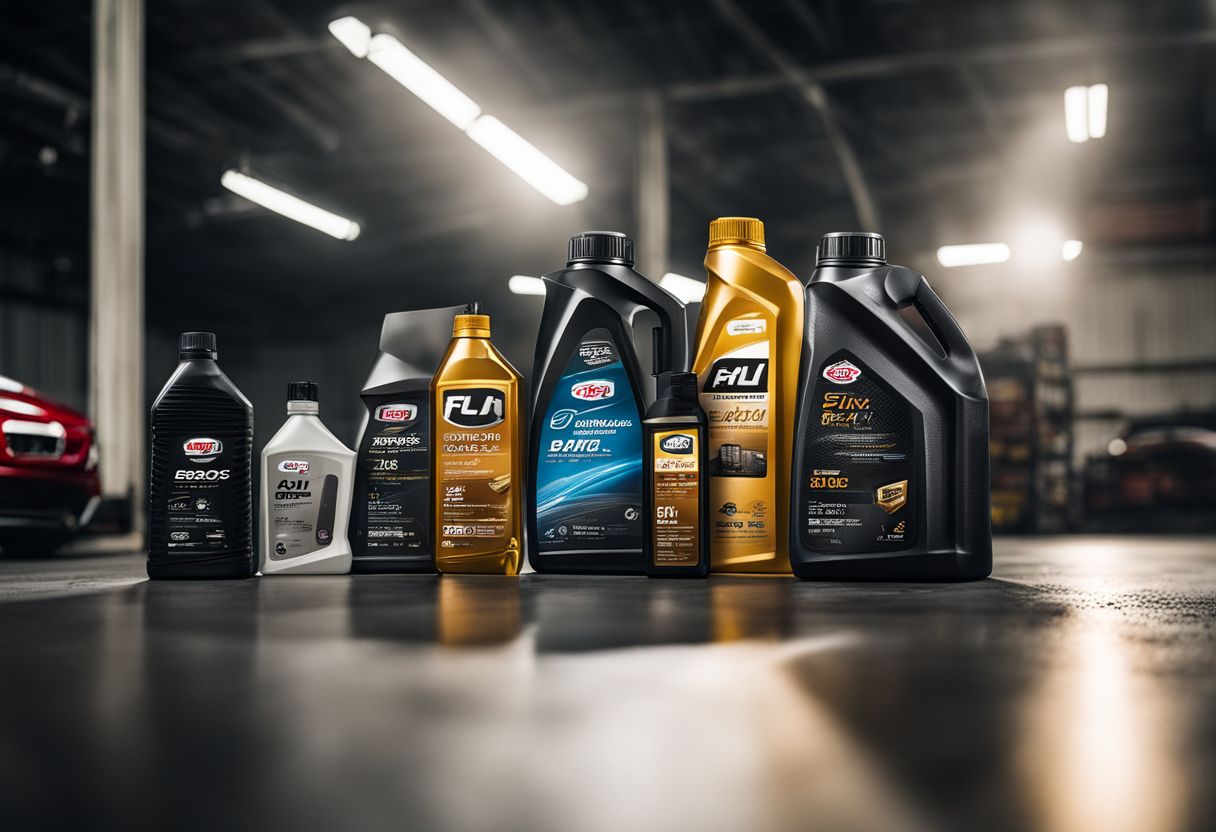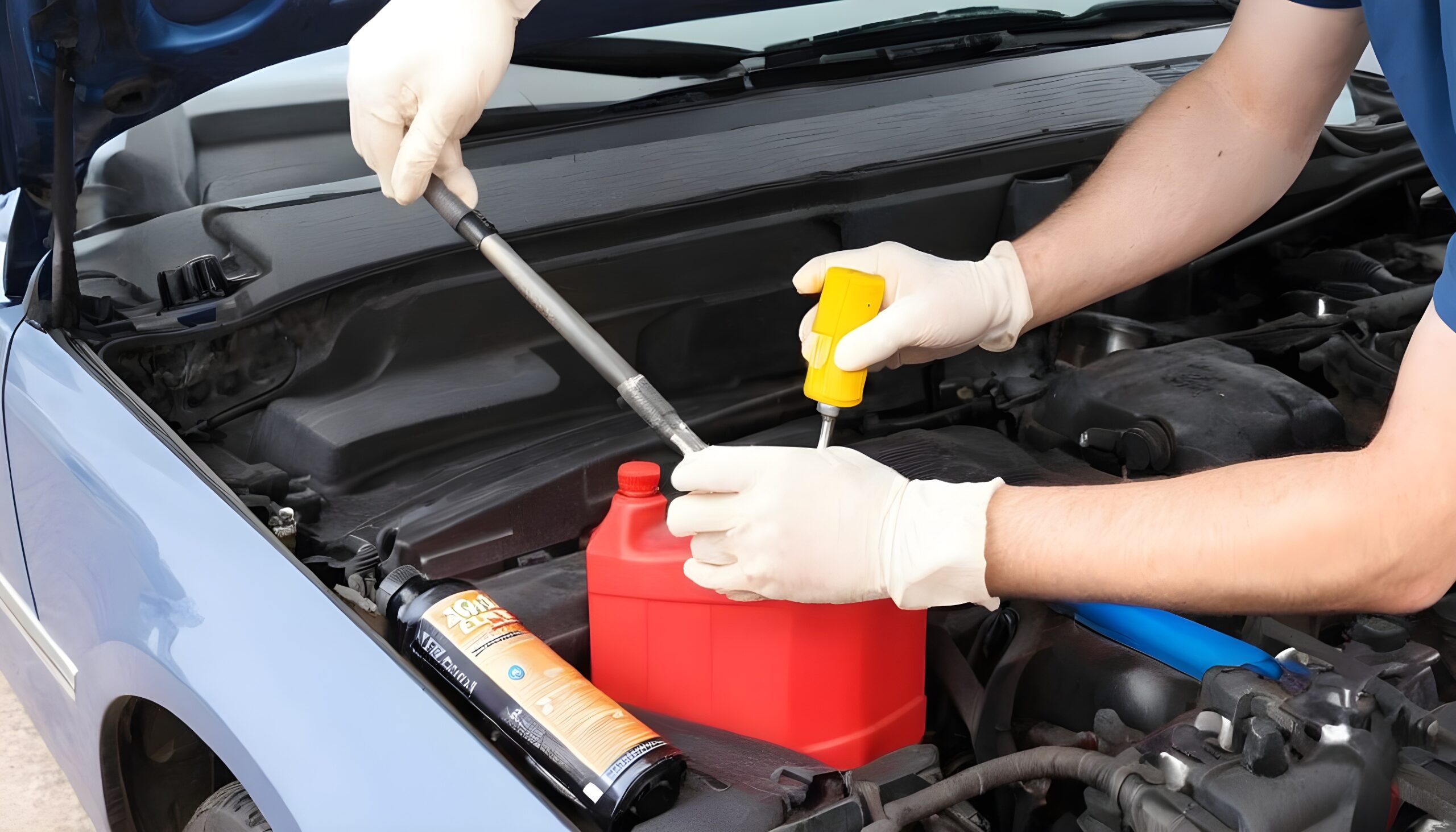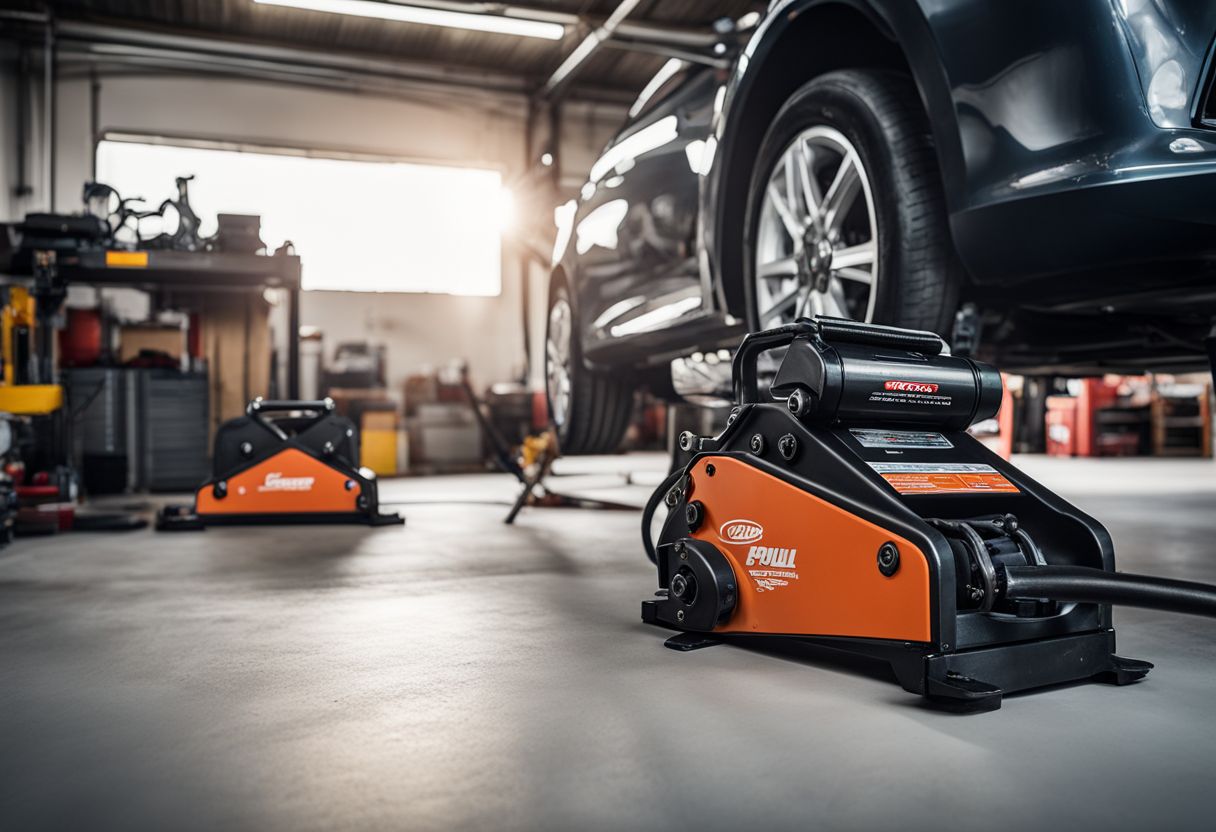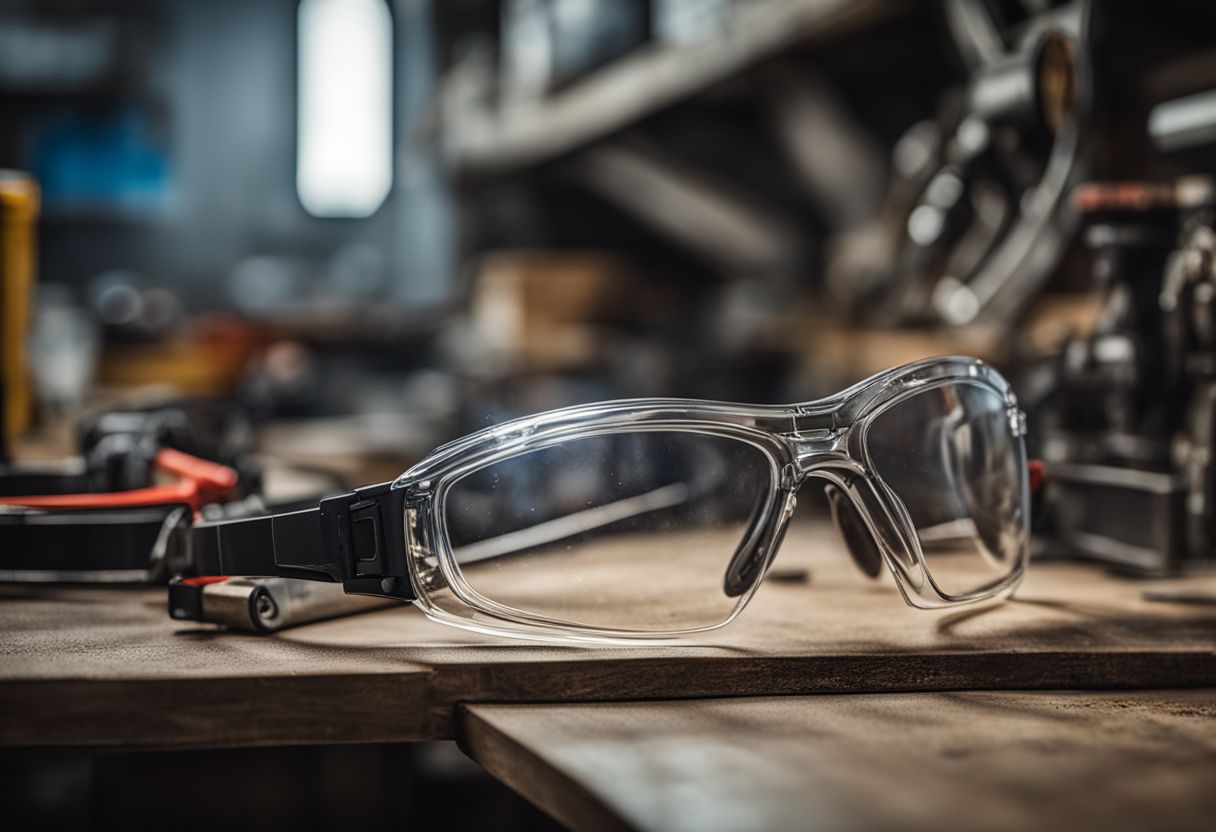Changing your own oil can seem daunting, but it’s a skill many car owners want to master. With regular oil changes crucial for vehicle health, having the right tools on hand makes all the difference.
This blog post will guide you through the essentials needed to change your oil confidently and safely. Keep reading to rev up your DIY skills!
Major Points
- You can save money by changing your own oil, needing only to buy the engine oil and tools once.
- Essential tools for an oil change include a ratchet and socket set, wrenches, screwdriver set, maintenance ramps or jack stands, safety glasses, and an oil filter wrench.
- Safety is key; always use a hydraulic floor jack with jack stands for support and wear safety glasses to protect your eyes from debris.
- A funnel helps add new oil without spills while nitrile gloves keep hands clean during the process. Use a creeper for easy access under the car.
- After changing the oil, properly dispose of old motor oil by recycling it as per local regulations.
Benefits of Changing Your Own Oil
Changing your own oil can save you money, increase your knowledge about car maintenance, and allow for customization of oil and filter brands.
Saves money
Changing your own oil cuts down on costs. Service shops charge for labor and materials, but doing it yourself means you only pay for the engine oil and tools needed. Over time, this can add up to big savings.
You also avoid extra fees that shops may add to your bill. By choosing affordable supplies, you get control over how much you spend on each oil change.
Having the right essential tools helps too. When you invest in items like an oil filter wrench or a drain pan once, they last for many changes. This saves more money than paying someone else every time your car needs fresh motor oil.
Plus, if you watch out for sales or discounts on motor oil and filters, your cost per oil change goes down even further!
Increases knowledge about car maintenance
Learning to change your own oil boosts your car know-how. You uncover the inner workings of your vehicle’s engine. This hands-on experience teaches you about different parts, like the oil filter and drain plug.
As you perform oil changes, you become familiar with tools such as wrenches and ratchets. You also learn which type of oil is best for your car’s engine.
Knowing how to maintain your car can help it last longer and run better. By tackling routine maintenance, you spot potential issues before they grow into big problems. It’s a smart way to understand how your car works and keep it in top shape without relying on others.
Allows for customization of oil and filter brands
Choosing the right oil and filter for your car makes a big difference. You get to pick high-quality products that keep your engine running smoothly. With DIY oil changes, you’re in control.
Pick brands that match your vehicle’s needs and help it last longer. This way, your car gets exactly what it wants, not just what’s in stock at the service center.
Doing it yourself means you can avoid quick-lube shops that might use cheaper oil and filters. Instead, grab the best for your car’s health. Better oil improves performance and makes engines live longer.
That means fewer issues down the road because you chose top-notch stuff for every oil change process.
Tools Required for Changing Oil
To change your car’s oil, you’ll need a ratchet and socket set, wrenches, screwdriver set, maintenance ramps, hydraulic floor jack and jack stands, and safety glasses. These tools are essential for safely and efficiently changing the oil in your vehicle.
Ratchet and socket set
The ratchet and socket set are essential for changing your car’s oil. These tools make removing fasteners quicker as the ratchet allows you to keep it attached to the bolt while turning it with ease, saving you time and effort.
With these standard tools in hand, changing your own oil becomes a straightforward task.
Wrenches
To change your car’s oil, you will need wrenches. A band wrench or adjustable jaw wrench is best for removing the oil filter. You can also use a regular adjustable wrench if the filter isn’t too tight.
Additionally, a specific tool called an oil filter wrench is required for loosening the oil filter or oil filter cap during an oil change. This tool comes in different styles such as strap/swivel style and is essential to complete the task effectively.
Remember, changing your car’s oil requires precision and specialized tools like these wrenches to ensure everything goes smoothly!
Screwdriver set
To change your vehicle’s oil, having a quality stripped hex screw is essential. A 1/4″ socket screwdriver with a T-25 Torx bit is crucial for handling the under-body splash pan during certain oil changes, such as those for VW vehicles.
Additionally, it’s important to invest in properly machined screwdrivers with comfortable handles as they are valuable additions to any basic tool kit. When working on an oil change, using a snug-fitting screwdriver for the drain screw comes highly recommended, especially when dealing with lower unit oil plugs.
Remember that a well-equipped and carefully chosen screwdriver set can make your DIY oil change smoother and safer. With the right tools at hand, you can ensure efficient completion of this regular maintenance task without unnecessary hassle or risk of damage.
Maintenance ramps
Maintenance ramps are essential tools for changing your car’s oil. They provide the necessary elevation, making it easier to access the underside of the vehicle during oil changes.
These ramps are commonly used and greatly simplify the process of a DIY oil change.
When selecting maintenance ramps, consider factors such as durability, weight capacity, and ease of use. For larger vehicles, heavy-duty truck ramps are available to cater to their specific needs.
Hydraulic floor jack and jack stands
The hydraulic floor jack and jack stands are necessary for safely lifting and supporting your vehicle during the oil change. Hydraulic jacks work by using fluid to lift heavy loads, making it crucial to follow the safety tips provided by the manufacturer when operating them.
Regularly changing the oil in the jack is important to maintain its performance and ensure safe usage. To avoid common mistakes, always position the jack properly under the vehicle, never overload it, and use jack stands for additional support while working on your car.
Before engaging in an oil change at home, ensuring you have a hydraulic floor jack and sturdy jack stands is crucial for both your safety and efficiently completing the task.
Safety glasses
Safety glasses are a crucial part of the essential tools needed for changing oil in your car. According to OSHA, safety glasses can help prevent potential hazards when using power tools during an oil change, ensuring your eyes stay protected.
These safety glasses must comply with specific consensus standards as outlined by OSHA rules for eye and face protection published in 2016, highlighting their importance in vehicle maintenance procedures like changing oil.
When working on the underside of a car during an oil change, it’s essential to wear safety glasses to protect your eyes from any debris or fluids that may accidentally splash. Not only do they keep you safe while working on your car, but they also ensure compliance with important workplace regulations related to eye and face protection.
Essential Oil Change Tools
Ensure you have an oil filter socket or wrench, a funnel, an oil capture drain container, nitrile gloves, and a creeper for ease of access underneath the vehicle. For more information on essential tools needed to change oil, continue reading below.
Oil filter socket or wrench
The oil filter socket or wrench is a must-have tool for changing your car’s oil. It allows you to efficiently remove the old oil filter, making the process smoother and faster. This tool works in combination with other essential tools like a drain pan, socket set, funnel, and wrench for the drain plug.
The oil filter socket or wrench comes in different types – traditional strap wrenches and socket or end-cap wrenches – which can lock onto the top edges of the oil filter when used with a ratchet wrench.
Remember that having an oil filter socket or wrench is crucial for completing an efficient and successful oil change in your car.
Funnel
A funnel is a must-have tool for changing your car’s oil. It helps in pouring new oil into the engine accurately without spilling. Using a funnel prevents messy spills and ensures that the new oil is poured precisely where it needs to go.
This simple tool makes the process of adding new oil during an oil change much cleaner and more efficient.
During an oil change, using a funnel can prevent spills and messes, ensuring that all the new oil goes exactly where it should. This essential tool makes refueling or changing the engine’s oil much easier and cleaner for any vehicle owner.
Oil capture drain container
The FloTool 16-Quart Drain Container is essential for handling multiple oil changes. It’s leak-proof, ensuring that no oil spills during the process, making clean-up a breeze. This container is designed to catch and hold the used oil as it drains from your vehicle, allowing for an easy and mess-free disposal.
During an oil change, a drain pan like the FloTool 16-Quart Drain Container becomes indispensable for catching the escaping oil when you unscrew the drain plug. The leak-proof design ensures that no mess is left behind, simplifying the entire process of changing your vehicle’s oil.
Nitrile gloves
When changing your car’s oil, nitrile gloves are essential for protecting your hands from motor oil and potential chemical exposure. These gloves offer high tensile strength and puncture resistance, making them ideal for preventing injury during the oil changing process.
Their chemical and abrasion resistance makes them a preferred choice over latex gloves, especially for those with latex allergies. Disposable nitrile gloves not only keep your hands clean but also reduce the griminess of handling motor oil, ensuring a safer and cleaner experience.
It’s crucial to select the right type of nitrile glove based on your specific needs and applications. Whether you’re working under your vehicle or handling chemicals during maintenance, using nitrile gloves is an important safety measure that every vehicle owner should consider.
Creeper
Invest in a quality creeper for smoother and more comfortable access to your vehicle’s undercarriage during an oil change. The wheels of the creeper ensure easy movement, making it simpler to reach different areas without straining or discomfort.
While most oil change tools are budget-friendly, a creeper may come with a higher price tag due to its impact on performance and convenience.
The right equipment such as a creeper can significantly improve your experience when changing your car’s oil. Easy movement and access allow for greater efficiency and comfort while working underneath your vehicle.
Step-by-Step Guide for Changing Your Own Oil
Gather necessary tools and supplies, prepare the vehicle for an oil change, locate the drain plug and filter, drain old oil and replace the filter, add new oil and check level, and properly dispose of old oil.
Ready to learn more about changing your own oil? Keep reading!
Gather necessary tools and supplies
Gather the essential tools and materials before starting. Ensure you have a ratchet and socket set, wrenches, screwdriver set, maintenance ramps, hydraulic floor jack and jack stands, safety glasses for protection.
You will also need an oil filter socket or wrench, funnel for pouring new oil, oil capture drain container to collect old oil, nitrile gloves for cleanliness and a creeper for easy access under the car.
Having these supplies on hand ensures a smooth and successful DIY oil change experience.
It’s important to gather all necessary tools and supplies in advance as they are crucial for changing your car’s oil efficiently. Properly gathering all the required tools means you can complete the process smoothly without any interruptions.
Prepare vehicle for oil change
Before starting, ensure to gather essential tools: wrench, oil filter wrench, oil pan, funnel, and a new oil filter. Locate the oil filter and drain plug beneath the car. Unplug the drain plug and let the old oil completely drain out before removing the old oil filter.
Locate drain plug and filter
To locate the drain plug and filter, first, position yourself beneath the vehicle. The oil drain plug is typically found at the bottom of the engine oil pan, while you can find the oil filter on the side of the engine.
The drain plug can be removed using a box-end wrench or 6-pt. socket, and for removing the oil filter, use a pair of wide-grip pliers or an oil filter wrench. Remember to wear safety glasses as this step involves getting underneath your vehicle.
Once located, carefully remove both the drain plug and old oil filter. Use caution to avoid any spillage or leaks when taking out these components from your car’s system. It’s essential to follow your vehicle’s owner’s manual instructions precisely during this process to ensure that no damage occurs during removal.
Drain old oil and replace filter
To drain old oil, use a wrench to remove the drain plug located at the bottom of the oil pan. Position an oil capture drain container under the plug before removing it to prevent spills.
After draining, ensuring that you have disposed of the old oil properly, move on to replacing the filter. To do this, use an oil-filter removal tool or pliers to carefully unscrew and remove the existing filter.
Remember, even though fresh oil has been drained from your vehicle, be cautious as there may still be hot remnants within the filter.
Add new oil and check level
After replacing the oil filter and draining the old oil, use a funnel to add new oil. Refer to your owner’s manual for the correct type and amount of oil needed. Once added, use the dipstick to check the level.
Ensure that the oil level falls within the recommended range marked on the dipstick.
Be cautious not to overfill as it can lead to engine damage or other complications. Start your engine and let it run for a minute before turning it off and rechecking the oil level once more using a clean dipstick.
Properly dispose of old oil
Recycling and reusing used motor oil can be beneficial for the environment. After changing your car’s oil, it’s important to pour the old oil into a large jug for recycling. Learning about how to properly recycle used motor oil and alternative uses around your home can help minimize environmental impact.
Conclusion
In conclusion, changing your own oil can save money and boost your car maintenance knowledge. Essential tools like ratchet sets, oil filter wrenches, and funnels are needed for a successful DIY oil change.
Safety gear such as gloves and safety glasses should not be overlooked. With the right tools in hand, you can confidently tackle an oil change at home and keep your vehicle running smoothly.
FAQs
1. What tools do I need to change my car’s oil?
You’ll need an oil drain pan, a socket wrench, an oil filter removal tool, a torque wrench, and maybe some car ramps to get under the vehicle.
2. Do I need special tools to remove my car’s oil filter?
Yes, you might need oil filter pliers or a specially designed oil filter wrench to take off the oil filter without causing leaks or damage.
3. Can I change my engine’s oil without a torque wrench?
Using a torque wrench is important because it helps tighten the drain plug with the right amount of force to prevent leaks.
4. How do I know which type of engine oil is best for my car?
Check your owner’s manual; it will tell you whether full synthetic or another type of engine oil is best for your vehicle.
5. Why should I run the engine before changing the oil?
Letting your engine run warms up the oil so it drains out more easily when you’re ready to remove it from your car.
6. What should I use if there’s no space to slide under my car for an oil change?
Use car ramps or jack stands that raise and hold your vehicle safely while giving you room to work underneath.

Anthony Phillip is a talented editor and writer known for his deep knowledge of home and garden topics. He earned his Master’s degree in Arts from Stanford University in 2006, and since then, he has made a name for himself in the writing world with a voice that is both trustworthy and motivating.
As the editor of Home and The Around Blog, Anthony knows how to tell stories that connect with people everywhere. He creates content that is easy to read and full of helpful tips and fresh ideas. His passion for home and garden goes beyond surface-level trends, Anthony truly understands design, functionality, and what makes spaces feel both beautiful and practical.
Anthony’s work does more than just inform; it inspires. He helps readers turn their homes into spaces that reflect their personal style and needs. His advice isn’t just theoretical; it’s based on real-world experience, making his guidance practical and easy to apply for anyone looking to improve their living spaces.
In a constantly changing industry, Anthony stays ahead by sharing his insights and creativity, consistently offering valuable tips and inspiration. His commitment to his craft ensures that he continues to influence and shape the way we think about home and garden, making a lasting impact on readers everywhere.

